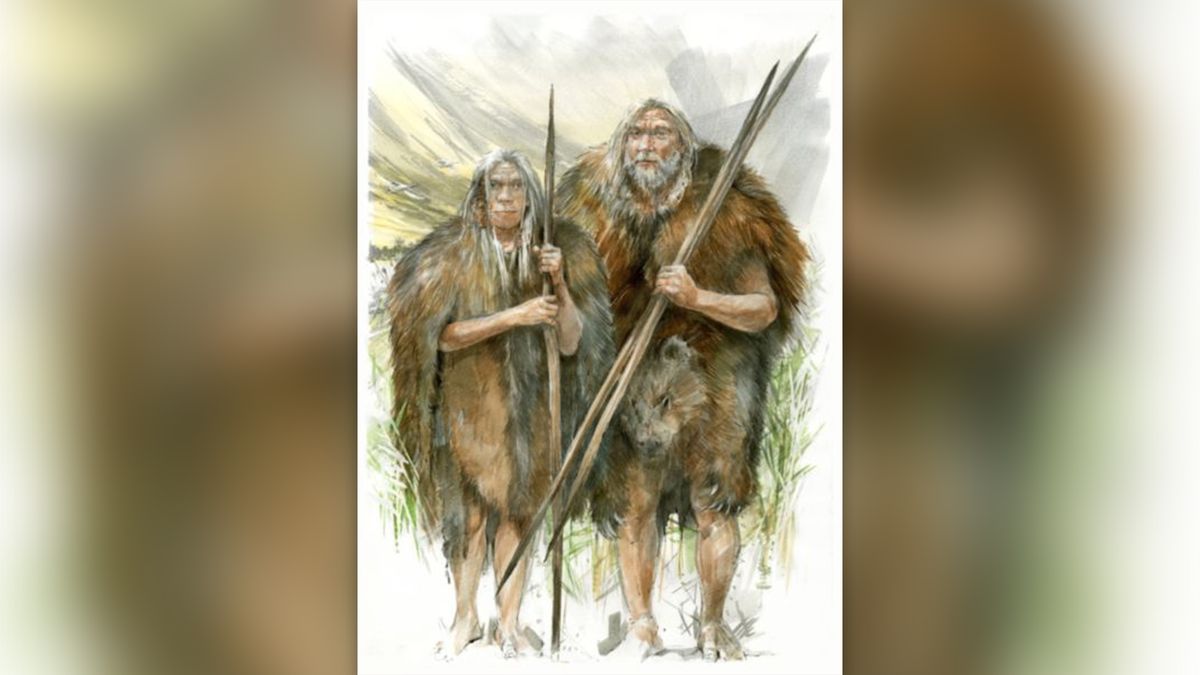As early humans evolved from ape-like ancestors, they came down from the trees, began to walk upright and lost their fur. But without fur, our ancestors would have been exposed to the elements. They would have needed clothing for protection.
So when did humans start wearing clothes?
This is a tricky question, because clothes don’t survive the way artifacts made of stone, bone and other hard materials do. Instead, scientists have to get creative. The evidence used to answer this question comes from a few main sources, including bones bearing evidence of skinning, sewing needles and awls, and lice.
Related: When did Homo sapiens first appear?
“We tried to understand what changes have happened in lice evolutionary history that might be correlated with loss of body hair in humans, and then the subsequent acquisition of clothing use in humans,” David Reed, a biologist at the University of Florida, told Live Science.
Lice are incredibly specialized to their habitats; a type that evolved to grasp human head hair wouldn’t survive among human pubic hair, for example. But before our ancestors lost their fur, those lice probably roamed all over their bodies. So, by looking at DNA to unravel the evolutionary history of lice, scientists have estimated that those two types diverged about 3 million years ago. However a human genetics study indicates that we lost our hair around 1.2 million years ago. Taken together, these studies suggest a range for when our ancestors lost their fur.
Another type of lice evolved to live in human clothing. These lice are generalists that can live on a wide variety of fibers.
“They feed one time a day on average — they kind of engorge themselves, which is gross — and then they retreat back to the clothing, where it’s safe,” Reed said.
By looking at when head lice separated from clothing lice, Reed and his team estimated that anatomically modern humans started regularly wearing simple clothes around 170,000 years ago, during the second-to-last ice age.
But there’s evidence of hominins — the group that includes modern humans and our closely related extinct relatives — wearing clothing much earlier than that. Marks on bear bones found at the Paleolithic site of Schöningen in Germany suggest that hominins, possibly Homo heidelbergensis, wore bear skins to keep warm around 300,000 years ago, according to research published by Ivo Verheijen, a doctoral candidate at the University of Tübingen in Germany, and colleagues in April 2023.
“If you want to take off the skin of an animal, the cut marks you leave behind most are on the ribs, on the skull, and on the hands and feet. And that’s exactly what we found in Schöningen,” Verheijen told Live Science. “We started comparing that to other sites from more or less the same period, and they also have cut marks on the hands and feet and on the skulls. So it seems to be a pattern around this time period that people were exploiting bears for their skins.”
Evidence of skinning isn’t necessarily evidence of clothes; hominins could have been using these skins to build shelter, for instance. But because temperatures were about 3.6 degrees Fahrenheit (2 degrees Celsius) colder, on average, at the time, people were likely using these skins to keep warm, Verheijen said.
“People had to be active to collect food around the landscape,” Verheijen added. “So some type of clothing must have been necessary to be able to survive here.”
But if there’s evidence of clothing from 300,000 years ago and clothing lice didn’t evolve until 170,000 years ago, what happened in between?
Lice evidence “can only measure when humans were wearing clothes on a very regular basis because the lice have to feed on human skin” regularly, Ian Gilligan, an honorary associate in the School of Humanities at The University of Sydney, told Live Science. “So if someone dons a garment one day and then doesn’t use the garment for another week, the lice aren’t going to survive,” he said.
What’s more, the lineage of clothing lice we’ve studied might not be the only one that’s existed. “There are probably other head lice that infested the clothes off and on at many stages over the last, you know, million years,” Gilligan said.
Moreover, different human groups probably started and stopped wearing clothes many times throughout history.
For example, between 32,000 and 12,000 years ago — up to the end of the last ice age — Aboriginal people in Tasmania retreated to caves, probably for protection from the cold. But the archaeological record also shows evidence that they made clothes, including hide-scraper tools used to scrape animal skins and bone awls used to punch holes for sewing.
But then, the weather got warmer and they stopped wearing clothes.
“The hide scraper tools and the bone awls from 12,000 years ago to midway through the Holocene [11,700 years ago to present] — those tools just disappeared from the archaeological record,” Gilligan said. He noted that “they elaborately decorated their bodies, they colored their hair, they painted themselves, they had scarification, so they didn’t need clothes.”
link

